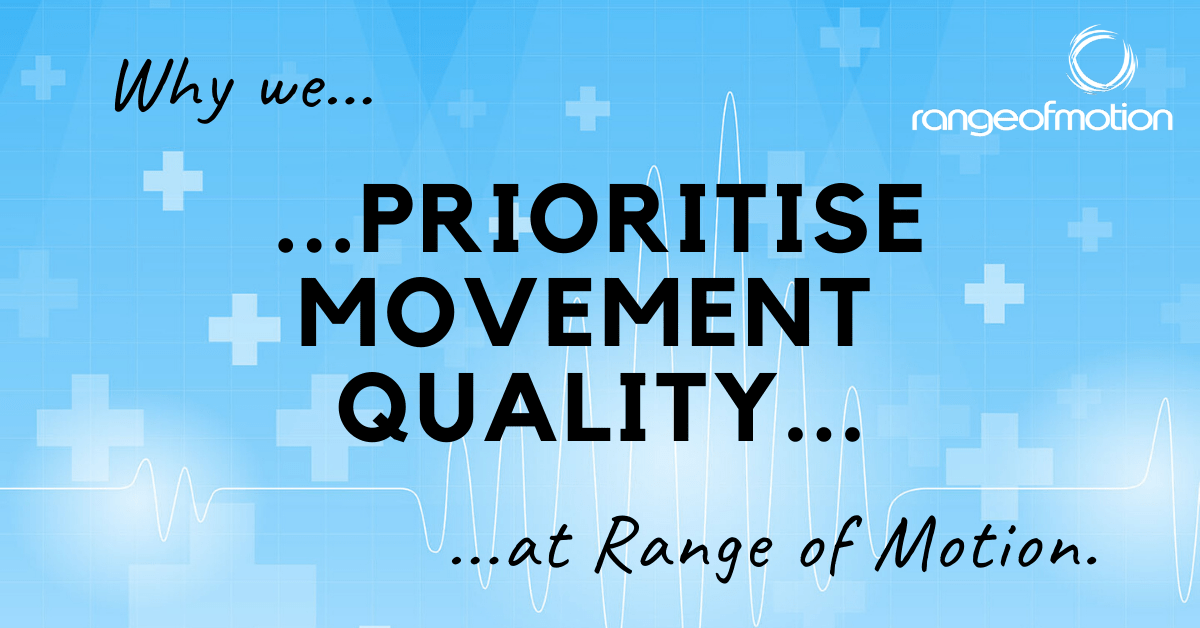Why we prioritise movement quality at Range of Motion.
 At Range of Motion we place the highest possible value on movement quality.
At Range of Motion we place the highest possible value on movement quality.
We hold our clients, and each other to these standards. (We actually hold ourselves to high standards in all areas, you can learn why by reading ‘Why we hold each other to such high standards at Range of Motion‘.)
Sometimes, as intensity increases, we can start to see a breakdown in technique. This isn’t always a bad thing, because we can use these technique breakdowns as a diagnostic tool to tell us what we need to work on (learn more about this process by reading ‘Why we do a movement assessment during every session at Range of Motion‘). But if this breakdown extends beyond what we believe are acceptable limits, the exercise starts doing more harm than good.
Often, this breakdown in technique happens are people look for faster, stronger, or more efficient ways to do something.
But we don’t agree.
It’s our belief that good technique IS fast technique IS strong technique IS efficient technique IS safe technique.
They are one and the same.
Not only is good technique important for the sake of the movement itself, but for the sake of everything else. We believe how you do one thing is how you do everything. By holding each other to the highest possible levels of movement quality, it sends a message that we will hold ourselves to high standards in everything else we do (check out ‘Why we hold each other to such high standards at Range of Motion‘).
We take our definition of movement quality further that just the start, mid and end points of a repetition.
Many movements are defined by where they start and where they end. A shoulder press for example starts with a weight at the shoulder and finishes with a weight overhead. A deadlift starts on the ground and finishes with the body locked out.
But what we see as just as important as these two points is what happens BETWEEN them.
Our priority is not just that the repetitions are completed, but that they are completed WELL.
We call these guidelines ‘quality criteria’. Criteria that must be met for the repetition to count.
When we exercise, we’re causing stress on our body. Of course, this stress is important, because it encourages our body to adapt and evolve and become healthier.
There are two forms of stress, (di)stress and (eu)stress.
Distress occurs when the exercise is doing more damage than good. This can occur when we don’t value movement quality. Often, the damage is to our musculo-skeletal system – applying stress and strain to our joints, muscles and tendons that they cannot cope with. This leads to short-term injury. Of course, if we only focus on technique and disregard intensity, we expose ourselves to more long-term chronic conditions or degeneration. We need both technique and intensity.
Eustress on the other hand, occurs when we adhere to these quality criteria and achieve movements with excellent technique.
By prioritising movement quality, we’re prioritising positive stress, and maximising the benefit exercise can have to our health.





